On Running Cloudventure
Test Locations: Boulder, Colorado
Test Duration: 50 miles
Stated Stack Height: 25 mm (heel) / 19 mm (forefoot)
Stated Heel-to-Toe Drop: 6 mm
Stated Features:
- Outsole combines multiple grip patterns to keep you in control on the trail
- Technical engineered two-layer mesh upper provides optimal ventilation for cooling comfort, even on tough climbs
- MissionGrip outsole provides the tech and traction to propel you to the summit
- Zero Gravity Midsole foam provides the cushioning to let you own the downhill
Reviewer: 5’10”, 118 lbs / 178 cm, 54 kg
Size Tested: US Women’s 8
Stated Weight per Shoe (US Women’s Size 8): 240 g / 8.5 oz
Blister’s Measured Weight (US Women’s 8):
- Shoes + Laces: 250 g (left) & 252 g (right)
- Insoles: 15 g (left) & 15 g (right)
- Total: 265 g (left) & 267 g (right)
MSRP: $149.99
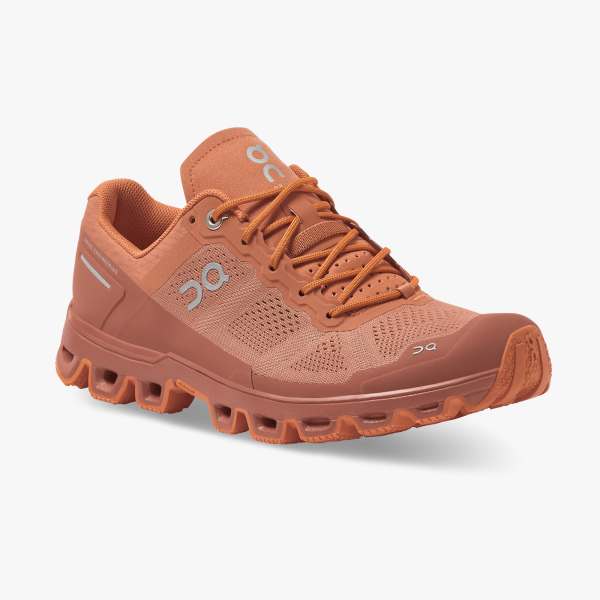
Intro
On Running is a relatively new entrant to the running world (founded in 2010) that makes unique shoes for a variety of uses.
The Cloudventure is the “everyday” trail training shoe in their lineup, designed to provide a lightweight, grippy ride for all kinds of terrain. It’s aimed less at fast-paced racing (On makes the Cloudventure Peak for that), and more at everyday runs or longer-distance events. After chatting with some of my running friends about the Cloudventure, I’ve gotten the impression that people either love them or absolutely can’t stand them — there seems to be very little middle ground. Given that, I was eager to try them for myself to see what I thought.
The Cloudventure has been my first experience with On’s shoes, and I’ve spent the last few months using them for a mix of running and hiking. So does the Cloudventure’s unique design live up to the hype that I’ve heard from some, or does it fall a bit flat compared to more traditional trail shoes?
Fit
As with any shoe, it’s a good idea to try on the Cloudventure in person before buying if possible. With that in mind, I can give an overview of how it fits my feet, which are fairly low volume but have large bunions.
The first thing I noticed when I put on the Cloudventure was how wide the toe box felt. I usually prefer shoes with slightly narrower toe boxes, which may be why I felt like there was a ton of extra space around my toes in the
Cloudventure. While this may not be a problem for runners with higher-volume feet, it makes the shoe feel a bit sloppy / insecure for my feet and fit preferences.
The Cloudventure’s midfoot has a more snug fit but was still a bit wide compared to other shoes I’ve been running in, most notably the La Sportiva Kaptiva and Salomon Sense Ride 3. It isn’t so wide that my foot slides all over in the shoe, but it’s definitely noticeable. I am able to get a reasonably secure fit in the Cloudventure, but only when I really take the time to tighten the laces — which is easier said than done.
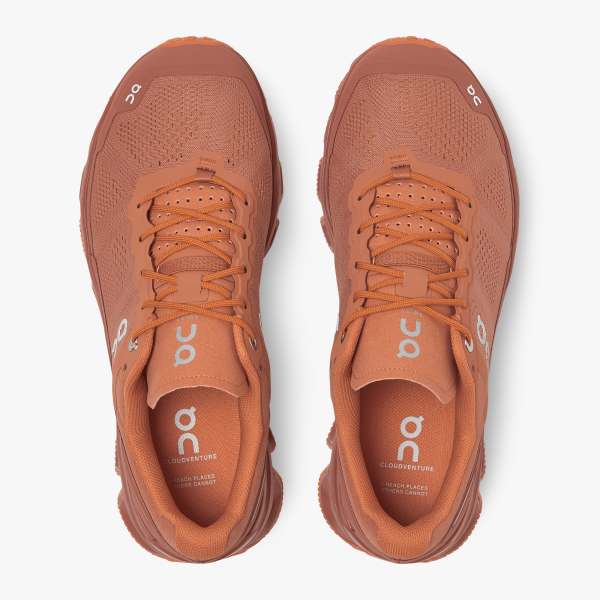
The Cloudventure’s laces are smaller in diameter than any other shoe I have used, which I think is part of what has caused a surprising number of issues. First off, they’re hard to grab and also fairly hard to tighten to my liking. I also noticed that they tend to come untied rather easily, so I have to be extra careful to securely tie them — and even then, they come undone more than the laces on other shoes. Even when I stop to re-tighten them during a run, it’s hard to get them as tight / secure as I’d like to. The one perk of the thin laces is that I haven’t had any issues with them causing hot spots or irritation on the tops of my feet.
Overall, I’d describe the Cloudventure’s fit as decidedly mediocre for my foot shape and fit preferences. I prefer shoes that hold my foot securely and snugly in place, and the Cloudventure falls a bit short in that respect. Still, for mellower runs on less technical terrain, this never proved to be a problem. The fit is secure enough that it never caused any serious issues on that kind of terrain. I didn’t get any blisters or hot spots on 10-mile runs — but the Cloudventure’s fit isn’t nearly as confidence-inspiring on more rugged terrain as a shoe like the La Sportiva Kaptiva or Nike Pegasus Trail So maybe even more than with other shoes, I think trying on the Cloudventure in person will be important, particularly for those like me with lower-volume feet
Weight
The Cloudventure has a stated weight of 240 g, which is pretty similar to other moderately cushioned trail running shoes on the market. On paper, the Cloudventure is actually a little lighter than I would’ve expected — its unique midsole / outsole looks like it would be a bit heavier than a more conventional design. For reference, here’s how the Cloudventure’s stated weight compares to some comparable models from different brands (all stated weights are based on a US Women’s Size 8):
210 g / 7.4 oz — On Running Cloudventure Peak
215 g / 7.6 oz — Hoka One One Torrent 2
235 g / 8.3 oz — Salomon Sense Ride 3
240 g / 8.5 oz On Running Cloudventure
247 g / 8.7 oz — Altra Lone Peak 4.5
250 g / 8.8 oz — La Sportiva Bushido II
261 g / 9.2 oz — Hoka One One Speedgoat 3
In spite of its fairly low stated weight, the Cloudventure feels a bit clunky / cumbersome to me on the trail. The Cloudventure felt fine for more mellow training runs, but it wouldn’t be my pick for days when I wanted to push the pace or run on more technical terrain — both because of the shoe’s weight, and its looser fit. If you don’t mind a slightly heavier-feeling shoe, the Cloudventure’s weight likely won’t be a problem — but I definitely felt like the shoe weighed me down a bit more than I’d personally prefer.
Upper
The Cloudventure’s upper is probably my favorite part of the shoe. While the upper is breathable, it is still pretty thick, which I like. This thickness acts as a barrier to prevent dirt and debris from getting into the shoe, and also makes for a pretty comfortable feel.
The Cloudventure’s upper also has a thicker synthetic overlay that wraps around the sides of the shoe to improve durability and support. Even with this extra overlay, the Cloudventure’s double-layer upper still seems to be plenty breathable, and I haven’t had any issues with my feet getting too hot in the shoe. The upper provides a soft, cushioned feel, and combined with the shoe’s fit, I appreciated that particularly for slower-paced recovery runs. The Cloudventure’s tongue is relatively thin, but still has enough padding to protect the top of my foot from the lacing system. It felt thicker / more padded than the tongue on the La Sportiva Helios III but thinner than that of the Hoka Challenger ATR 5.
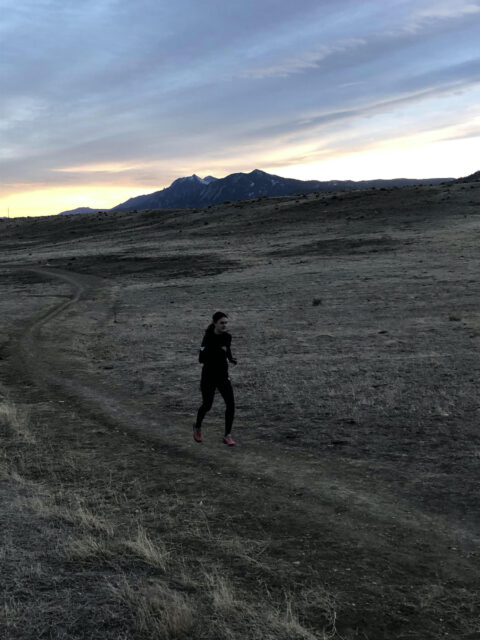
Midsole
The midsole of the Cloudventure uses a combination of the brand’s signature, hollow “CloudTec Pods” and Speedboard plate, which is a rigid plastic plate built into the top of the midsole. The Speedboard supposedly improves the shoe’s efficiency and energy return, while the CloudTec Pods act as shock absorbers on impact.
When I first picked up the Cloudventure, I was a bit shocked by how stiff it felt. In terms of lateral and longitudinal flex, the shoe doesn’t have much give to it — probably because of the Speedboard plate in the midsole. The Cloudventure is slightly more flexible than the La Sportiva Bushido II, but not by much.
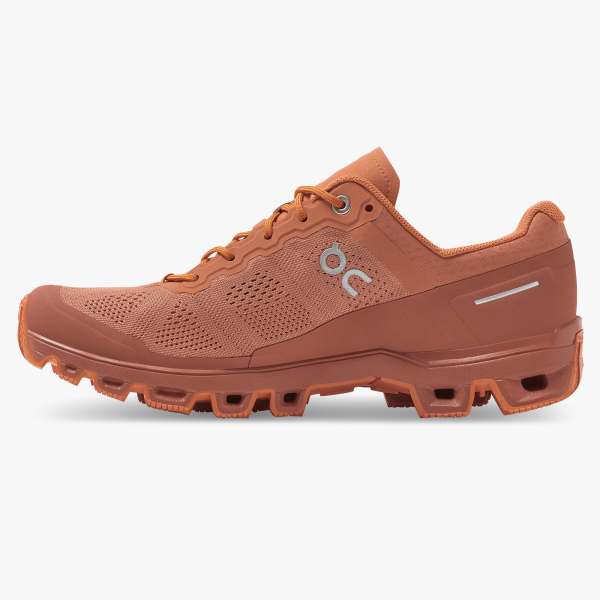
Even with its fairly stiff midsole, the Cloudventure’s cushioning feels surprisingly plush underfoot. The cushioning comes primarily from the hollow CloudTec pods that make up the bottom of the midsole and outsole. The pods are designed to reduce weight by only adding cushioning where you need it most, which I’ll admit to being a bit skeptical about initially. But after a few runs in the Cloudventure, I was impressed by just how “cushioned” the shoe actually felt. While it isn’t as plush as the Hoka Challenger ATR 5 or Scarpa Spin Ultra, the Cloudventure does feel much more cushioned than the La Sportiva Bushido II or Kaptiva. As I mentioned, the Cloudventure is a very stiff shoe — so it doesn’t feel as plush as some other shoes on the market. But while the Cloudventure is almost as stiff as the Bushido II, it feels far more cushioned on the trail.
Outsole
The outsole of On shoes is really what makes them stand out from the rest of the trail shoe market. As you may have noted from the images, the outsole rubber wraps around the CloudTec Pods — which also kind of act as large, square lugs.
The Cloudventure uses On’s Missiongrip outsole design, which combines a sticky rubber compound with low-profile lugs that supposedly provide traction on both smooth and rough terrain. In my experience, the Cloudventure’s outsole pretty much lives up to those claims. Even on icy spots of the Mesa Trail in Boulder, I felt confident in the shoe’s grip and didn’t have to worry about slipping. The outsole also didn’t feel like it was too grippy on more mellow gravel paths, making the shoe pretty versatile — which is always a plus in my book.

On Trail
While I did like the Cloudventure for certain runs, in the end, it definitely won’t be my go-to shoe for everything. As I’ve mentioned, the Cloudventure feels a bit clunky and heavy, making it less than ideal for my faster-paced runs. I do like the Cloudventure for gym workouts and spin biking, as it’s comfortable and stable on smooth surfaces, but for days when I wanted to rip around on the trail, they were not for me.
The Cloudventure’s looser fit and heavier feel make the shoe feel less than agile when running on the trails. The upper is comfortable, but with a not-super-snug midfoot and a slightly wider toe box, the fit isn’t confidence-inspiring for me when running on more technical terrain. I would not race in this shoe, but it did work well for slower recovery runs.
I’ll also note that I’ve enjoyed the Cloudventure for hiking. When pace isn’t a concern, the shoe is quite comfortable. I’ve hiked up to 7 miles on Mount Sanitas in Boulder a few times in these shoes, and they felt supportive and comfortable — much like the La Sportiva Bushido II.
So at least for my feet, the Cloudventure seems ideal for smoother terrain where I don’t need as snug of a fit, or for moderate speeds. Your mileage may vary, depending on how the shoe fits your feet and how you feel about the weight of your shoes.
Durability
After about 50 miles in these shoes, the Cloudventure is holding up as I would expect — they still look essentially new. They show no signs of wear on the outsole and the upper has no tearing or major stretching. The laces have stretched a bit, but not enough to impact the lacing system’s fit / security compared to when it was new. The Cloudventure did take a few runs to feel more molded to my foot and slightly less stiff, but it hasn’t softened up substantially since. My foot now fits comfortably in the footbed, but the Cloudventure still feels pretty stiff overall.
I’ll update this section as I run in the Cloudventure more, since it’s hard to really gauge durability after only 50 miles.
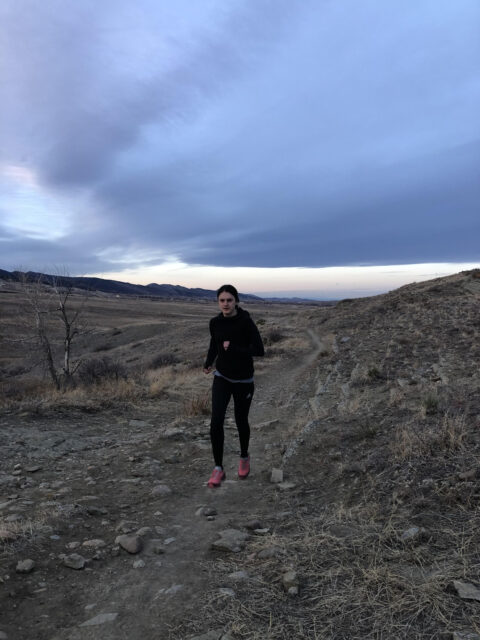
Who’s It For?
The Cloudventure could be a good option if you are looking for a stiff training shoe with a more cushioned ride, and with a slightly higher-volume fit. If you like the stiffness of a shoe like the La Sportiva Bushido II but want a bit more shock absorption while running, you might also like how the Cloudventure feels.
While it isn’t the lightest shoe on the market, the Cloudventure is still a comfortable option for those looking for a stiffer everyday trail training shoe. If you prefer a more peppy, nimble, efficient-feeling shoe, I think something like the La Sportiva Kaptiva or the Salomon Sense Ride 3 might be a better fit — in my opinion, both of those shoes have a more energetic feel without compromising cushioning. And those who prefer a very snug, secure fit and / or have low-volume feet should definitely try on the Cloudventure before buying, since it feels like it falls a bit on the higher-volume / roomier end of the spectrum.
Bottom Line
At the end of the day, the On Running Cloudventure isn’t my new personal favorite trail running shoe, but there are scenarios where it works quite well. I did find some great uses for it outside of technical trail running, with it serving as a great gym shoe and feeling nice and comfortable on hikes. On is also a rather “fashionable” brand, and you might find some of their other models in everyday clothing shops. And honestly, I think the Cloudventure would make a great casual shoe — especially in a more neutral color. The shoe is very comfortable, and my feet feel good in them for hours at a time. But for a trail running shoe — especially in technical terrain and at faster paces — the Cloudventure is a bit too heavy and sloppy in terms of fit for my preferences.
As previously mentioned, I think people either love On’s shoes or don’t get along well with them at all. Based on my experience with the Cloudventure, I think a lot of that comes down to personal preferences and fit, and I may be in the latter category. Still, I think the Cloudventure has the potential to be a good shoe for runners with higher-volume feet who don’t mind a bit of extra weight. It also seems like the lighter, more performance-oriented Cloudventure Peak (check out our full review here) might address many of my complaints about the Cloudventure. So if you are trying to decide between the two, I’d certainly recommend reading both reviews to get a better frame of reference.

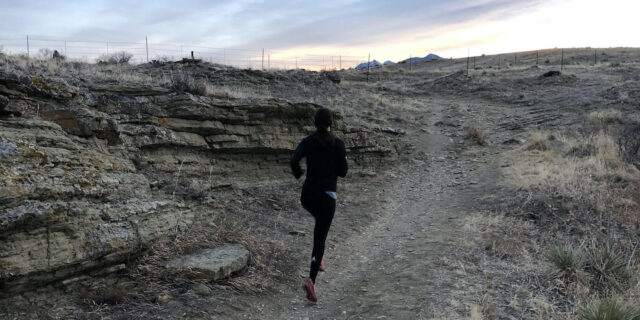

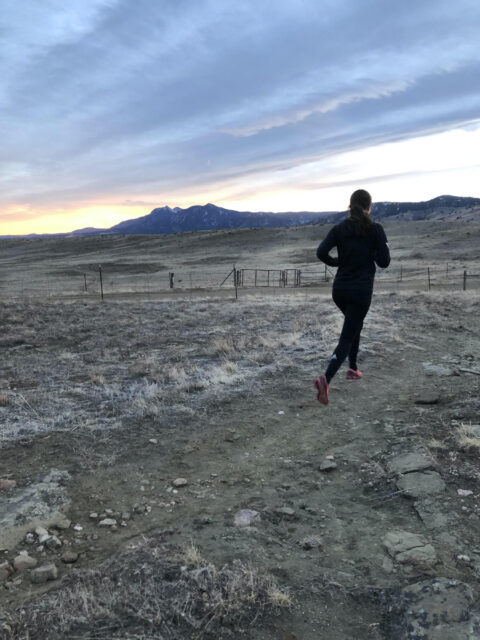
Have you tested the On Cloud Ultra too? Thanks for this insightful review